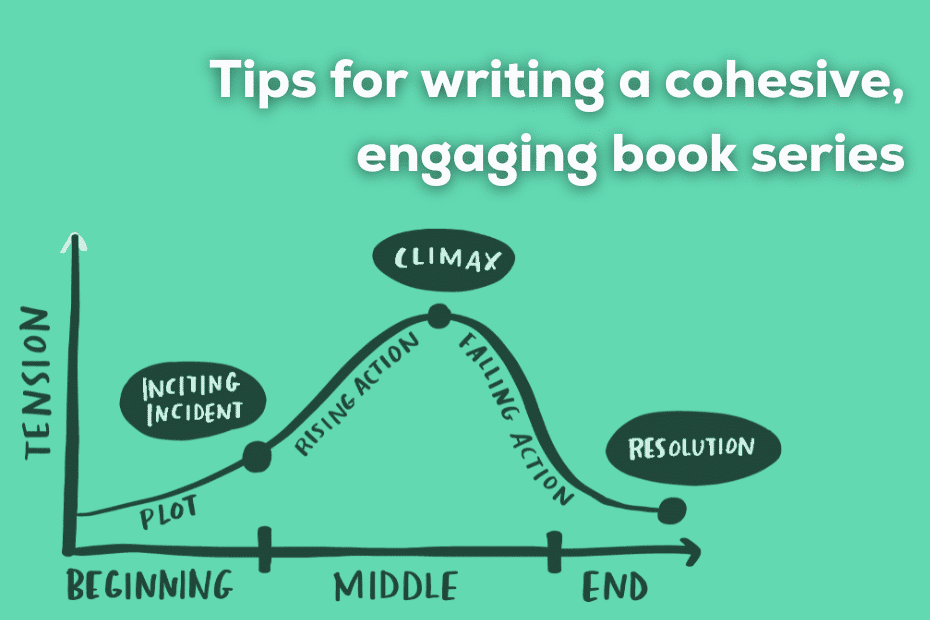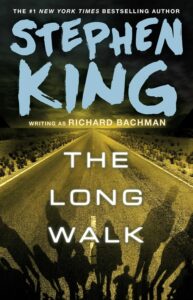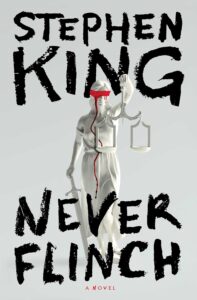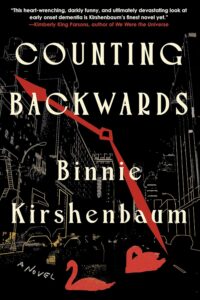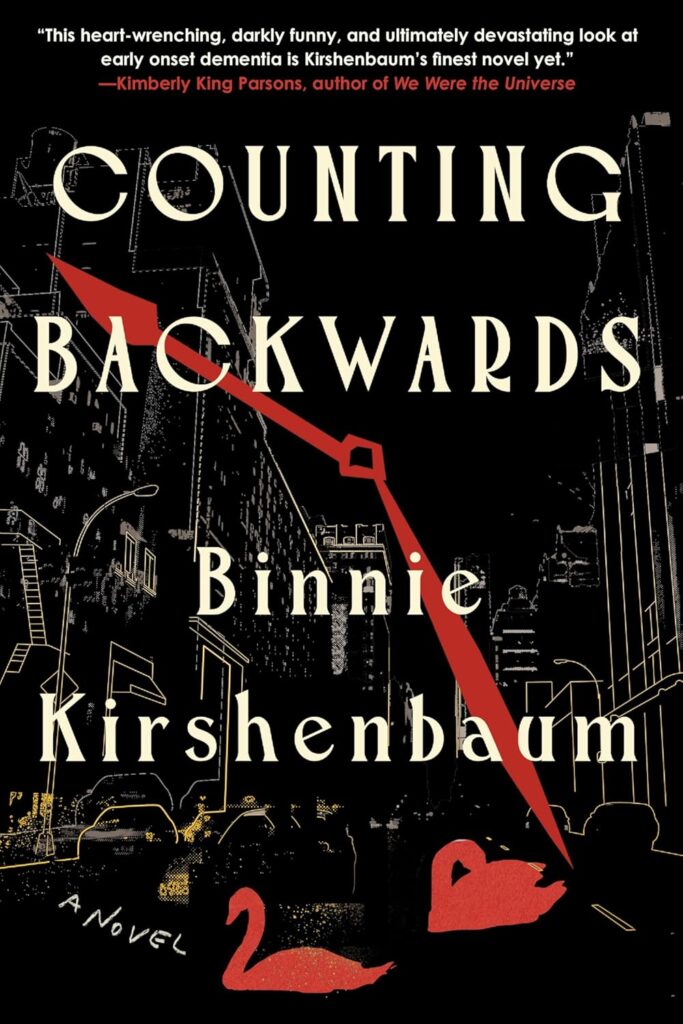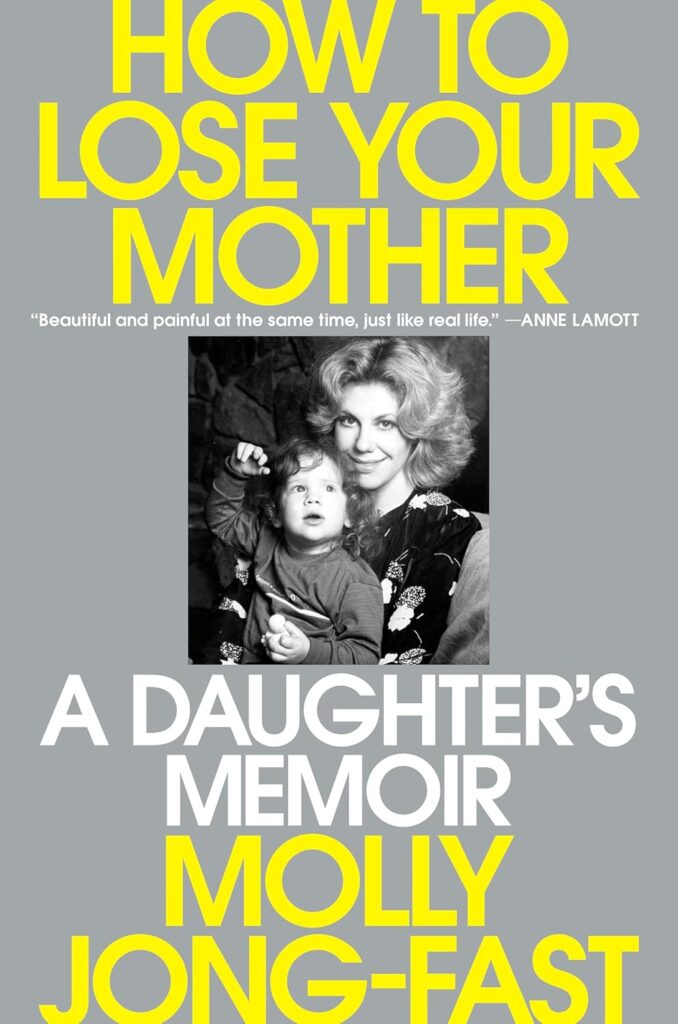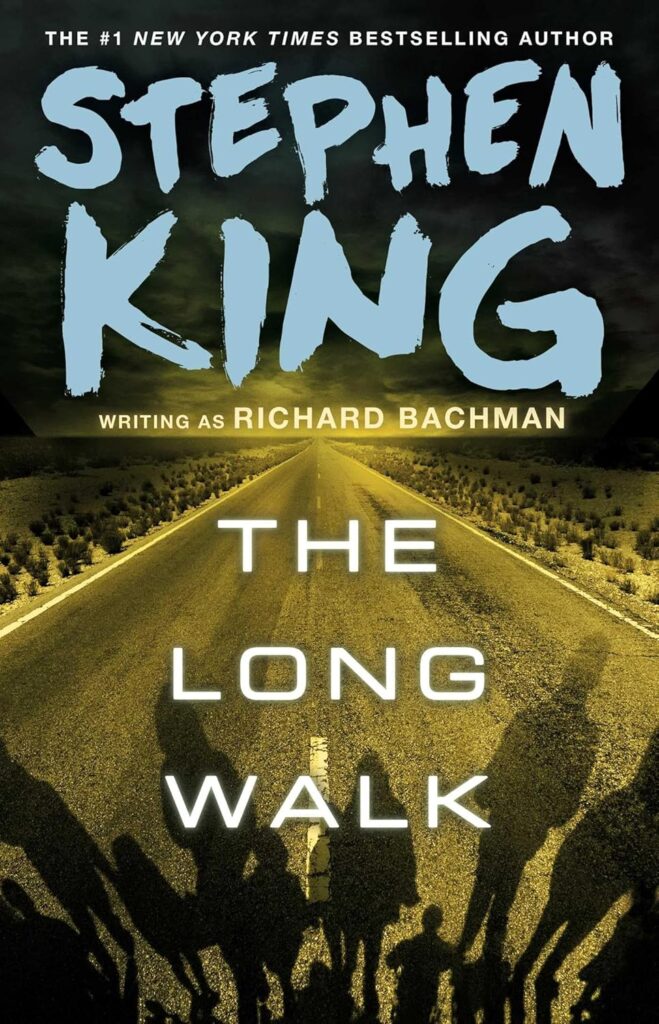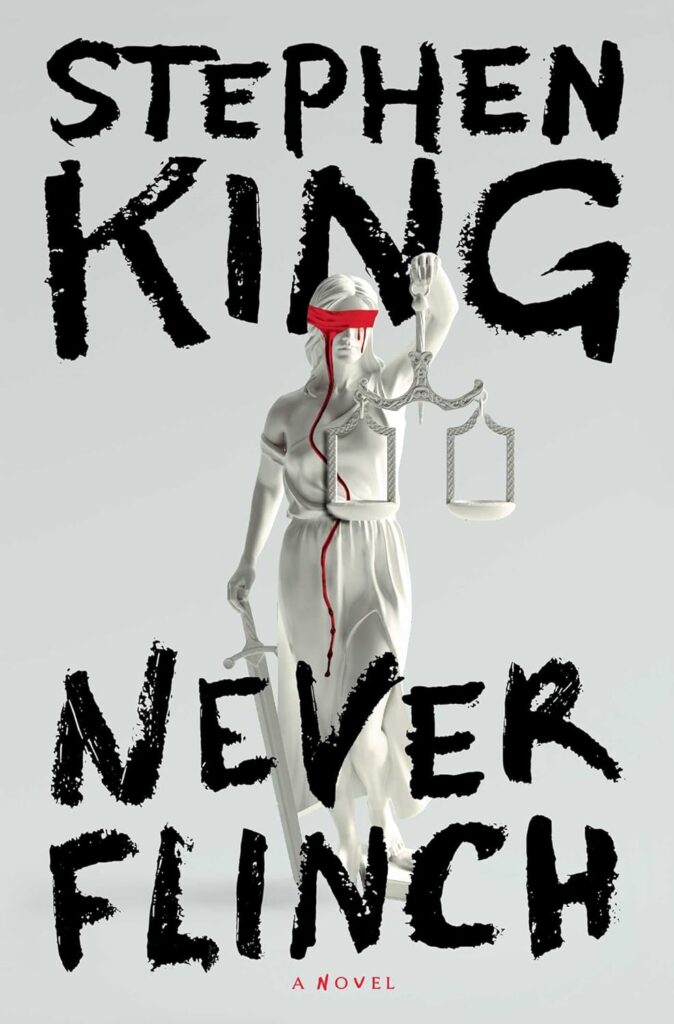So, you want to write a book series? Bold move—and I mean that in the best way. There’s something magical (and a little overwhelming) about committing to a multi-book story arc. For readers, a series offers a chance to sink into characters and worlds like they’re binge-watching their favorite show; for writers, it’s an opportunity to flex some serious creative muscles. But let’s not sugarcoat it—writing a series isn’t just stitching together a bunch of cliffhangers and calling it a day. It’s about planning, pacing, and creating a framework sturdy enough to support multiple books without driving yourself completely mad. Trust me, the more strategy you bring to the table early on, the more likely you are to finish the saga without pulling your hair out. Ready? Let’s figure out how to do this thing without turning your series into your personal soap opera of chaos.
Table of Contents
Understanding Book Series Types
Choosing the structure of your book series is like picking the layout of your dream house—it has to fit your story, your characters, and your endgame vision. If you’re wondering how to start writing a book series, locking down the type of series you’re building is step one. Not every series unfolds the same way (thankfully), so let’s break down three of the most common formats: serial, crossover, and episodic.
Serial Series: One Story Spread Across Multiple Books
A serial series is like tuning into your favorite Netflix drama, where every episode ends on a cliffhanger, practically begging you to hit “Next Episode.” These types of book series follow one continuous narrative threaded across multiple installments. Each book is less of a standalone and more of a stepping stone—think of J.K. Rowling’s “Harry Potter” saga or the sweeping espionage in “The Wheel of Time” series.
Here’s what makes a serial series tick:
- Strong focus on an overarching plot. Each book builds on the last to push the big story forward.
- Characters develop over time, especially in response to events that pile up through the series.
- Chapters—sometimes books—end with enough intrigue for readers to need the next installment.
If you’re leaning this way, be ready for some upfront structure-planning. Ditching the roadmap halfway through could land you in creative quicksand. Can you imagine Rowling fumbling Voldemort’s entire backstory mid-way? Exactly. For more, check out this complete guide to writing serial fiction.
Crossover Series: Different Characters, Same Universe
If serialized storytelling is a long train ride, crossover series are more of a sprawling subway system. Each book in a crossover series is centered on a different main character or storyline, but they’re united within the same world or lore. The Bridgerton series by Julia Quinn is a perfect example: one book might follow Daphne’s love story, while another jumps into Anthony’s world. Still, all of it ties back to that larger Regency-era backdrop.
Key Features:
- Each book feels uniquely fresh while maintaining connections to others.
- A shared world lets readers explore different corners without getting repetitive.
- Flexibility for writers: You can jump into new characters or stories whenever inspiration strikes.
For readers, diving into a crossover series is kind of like crashing different parties hosted by the same crew. Every book has its own vibe, but the characters and settings overlap just enough to make it feel cohesive. Writers, pay attention here—Goodreads has a pretty solid list of crossover book examples worth scoping out.
Episodic Series: Standalones within a Shared Framework
Episodic series are the rebels of the book series world. Each book can be read in any order because they’re self-contained stories unified by a common thread, usually the main protagonist, setting, or themes. Arthur Conan Doyle’s “Sherlock Holmes” stories are basically the blueprint for this. Holmes solves a different mystery in each tale, yet readers still build a strong connection to his quirks, brilliance, and interactions with Watson.
What makes episodic series stand out:
- Readers don’t need to start from Book One. This flexibility makes entry into the series easier.
- A consistent vibe or formula: readers know what to expect (whether it’s new crimes, fresh jokes, or outlandish worlds).
- High focus on character depth because the plots rarely interconnect long-term.
An episodic structure is like serving tacos at every dinner party—they might have different toppings, but the base (your protagonist) stays reliable and delicious. If you’re interested, here’s a helpful discussion on episodic versus progressive series that dives deeper.
Each format has its quirks, strengths, and potential pitfalls. Whether you’re dreaming up the next epic saga, crafting a universe full of interconnected stories, or building one-off adventures, picking the type of series that fits your vision is step one to starting your book series with confidence.
Developing a Series Concept
The bedrock of any successful book series is an idea that’s sturdy enough to carry multiple books—but not so unwieldy that it buckles under its own weight. Think of it as planning a road trip: you need the right destination (your series concept), a reliable car (the central theme), and a map to guide you through unexpected plot detours. Let’s break this down into the crucial steps.
Crafting the Central Idea
Your central idea is the glue that holds your book series together, so this isn’t something you want to wing. A good starting point is to ask yourself: What’s the core story I want to tell? For a solid series concept, this “core story” should have depth—you’ll need enough material to sustain interest across multiple books.
Here’s how you can refine your central idea:
- Focus on the overarching theme: What’s the heart of your story? It could be an epic battle between good and evil, or a nuanced exploration of a family legacy. Keep it broad enough to cover multiple plot arcs but specific enough to feel original.
- Outline a big-picture story arc: What’s your endpoint? Knowing where your series ends can help you reverse-engineer meaningful twists and turns along the way. Think of J.R.R. Tolkien’s The Lord of the Rings—Frodo’s mission to destroy the One Ring is the thread holding the sprawling story together.
- Identify the emotional stakes: Why should anyone care? Hook your readers with relatable motives and high stakes that escalate book by book.
If you’re still brainstorming, consider this helpful resource on developing story ideas for a series. It’s packed with practical prompts to get your creativity flowing.
 Photo by RDNE Stock project
Photo by RDNE Stock project
Determining the Number of Books
Okay, let’s talk numbers—how many books are you planning for this bad boy? Before you say, “As many as it takes!” let’s pump the brakes. The length of your series needs to serve the story, not the other way around.
Here are some points to consider:
- What’s the scope of your idea? If your plot involves a simple “problem-solution” setup, stretching it over seven books risks thinning the narrative. On the flip side, a massive fantasy epic might choke under a three-book limit.
- Think about pacing: Each book needs its own arc (conflict-resolution) while feeding into the series-wide storyline. If you notice your plot sagging after the second book, it might be time to wrap things up. Need a little guidance? Check out this discussion on determining series length—the tips are gold.
- Stick to your commitment level: Writing a series is tough. If finishing one book feels like scaling Everest, committing to a 10-book series is a recipe for burnout. Start with a trilogy for a manageable challenge (and call it a day if it feels complete).
Knowing Your Genre
Genre is the GPS for your entire series. Whether it’s fantasy, mystery, romance, or sci-fi, the genre you select dictates everything from tone to pacing to plot structure. Choosing the wrong genre is like packing swimsuits for a trip to Antarctica—know your audience, and set expectations they’ll love.
Some things to keep in mind:
- Genre influences structure: A romance series thrives on fresh pairings and emotional arcs, while a mystery series might lean on “whodunits” with recurring lead characters. Understanding your genre will help you plan story beats more effectively. For a primer on how genre shapes storytelling, check this excellent breakdown of genre fundamentals.
- Audience expectations are key: Fans of cozy mysteries probably don’t want a gritty noir twist in Book Two. Stick with the tone and style your audience signs up for—consistency is your ticket to reader loyalty.
- Genre can expand or restrict: Fantasy writers often enjoy the freedom to build sprawling worlds (anyone say game of thrones vibes?), while thriller writers might find comfort in tight, high-stakes plots. Your genre isn’t a limitation but a framework. Use it to your advantage.
By nailing down your core idea, sizing your series appropriately, and paying attention to genre norms, you’re building a sturdy foundation for your book series.
Planning the Series Arc
Let’s face it, starting a book series without mapping out the big picture is like trying to assemble IKEA furniture without the instruction booklet—chaos is inevitable, and something’s bound to fall apart. If you want your series to hold together from book one to the grand finale, you need a plan. A solid plan. Let’s get into how you craft a series arc that doesn’t make you want to throw your laptop out the window.
Creating a Roadmap
Think of a roadmap as your series’ GPS. It’s there to guide you through the twists and turns of your multi-book journey without needing a last-minute U-turn on plot lines. When you have a solid outline, you’re less likely to lose your way halfway through book three when your villain’s motivations suddenly vanish into thin air. (We’ve all been there—or at least, feared it.)
Here’s why a roadmap matters:
- It keeps you focused. A clear outline ensures that every book is driving toward that ultimate endgame you have in mind. No random side quests or dead-end subplots needed.
- Consistency! Readers love smooth storytelling, and a roadmap helps you ensure your tone, pace, and story flow remain intact.
- Room for creativity. Let’s be clear—your outline isn’t a rigid contract. It’s flexible enough to allow you moments of creative brilliance but sturdy enough to protect the story from derailments.
For help on structuring your series roadmap, you can explore this guide to outlining a complete book series—because why reinvent the wheel?
Building a Series Bible
Consistency is non-negotiable when you’re writing a series. Imagine making it to book four and completely forgetting your main character’s eye color. (Spoiler: readers will notice and roast you for it.) That’s why building a series bible is essential—think of it as your centralized hub for everything about your series.
Here’s what you’ll want to track in your series bible:
- Characters: Record their physical attributes, quirks, history, and relationships. Even secondary characters deserve a little love here.
- World-building: Details about geography, cultures, politics, magic systems—whatever applies to your story.
- Plot details: Document timelines, key events, and unresolved threads so you’re not scrambling later.
Your series bible can evolve as you write, but it’ll save you from future headaches and inconsistencies. For more on setting up a series bible, check out this excellent resource on how to create a series bible for your fiction series.
Establishing Key Plot Points
Alright, now that you’ve got your general roadmap and series bible locked in, let’s talk about the meat of the story—those juicy key plot points that define each book. Picture your series as a rollercoaster: you’ve got to have the slow build-up (book one), the crazy twists and turns (midway books), and that final, breathtaking drop (the finale). All of it needs to connect seamlessly, so readers don’t feel like they accidentally got on the wrong ride halfway through.
To outline your key plot points:
- Start with the big picture. What’s the main conflict driving the series? Where does it begin, escalate, and, eventually, resolve?
- Break down your series into books. Each one needs its own smaller arc—hooks, climaxes, and resolutions—all feeding into the larger narrative.
- Plot every “aha!” moment. These include big reveals, character growth milestones, and those epic “oh no!” cliffhangers that make readers beg for the next installment.
If you’re unsure how to tackle this, here’s a helpful guide on how to outline pivotal moments in a series.
Put simply: don’t wing it. Every book in your series should feel complete while pushing the overarching storyline to new heights. Leave breadcrumbs between books that keep readers hungry but satisfied.
World-Building Across Series
World-building is one of those things you can’t just slap together and hope it works—like duct-taping a leaky pipe. When you’re writing a book series, the world you create has to do a lot of heavy lifting. It has to be convincing enough for readers to believe in it, rich enough to spawn multiple storylines, and consistent enough to avoid those “Wait, didn’t you say this character was born in the other kingdom?” reader calls-outs. Plus, it needs to leave room for surprises—because nobody wants a world so predictable it feels like a studio set. Let’s get into how to nail this.
Designing a Unique Setting
Creating a standout setting for your book series is like designing a theme park. It needs to wow people from the start, keep them wandering through different “lands,” and offer enough detail that they don’t spot the mechanics behind the rides.
Consider these priorities:
- Start with a signature element: What’s the thing that makes your world yours? A floating city? A magic system powered by secrets? Start with one big, unique hook.
- Think beyond visuals: It’s not just what a world looks like—how does it feel, smell, sound? Are there traditions, foods, or sayings that pop up? These are the small things that feel huge to readers.
- Add layers over time: Your world doesn’t need to become an encyclopedia entry in Book 1. Let your readers learn through context clues and character experiences.
For inspiration on setting some high standards in world-building, check out this list of books with amazing settings. It’s a reminder that your world should feel like a place someone might actually get lost in.
Consistency in World Details
Consistency in details is like keeping a ship watertight—one crack, and the whole thing sinks. If your protagonist suddenly forgets the geography of their hometown, or the magic system suddenly works differently, readers will notice. More importantly, they’ll care enough to call it out (because bad continuity hits harder than a plot twist gone wrong).
Here are some tricks to avoid world-building whiplash:
- Document everything: Keep a running log of the names, rules, and facts about your world. Whether it’s a notebook or a color-coded Excel spreadsheet, do it.
- Stick to made rules: A world’s laws should remain unbreakable unless the “breaking” makes sense in the plot. Let’s not bend physics just for a convenient ending—unless you’re fully owning THAT moment.
- Use a series bible: Trust me, this will save you so many headaches. Track every bit of minutiae so you’re always on the same page. Here’s a solid guide on creating a series bible if you don’t have one yet.
Don’t think of consistency as limiting; consider it the glue that holds your series together, making your world feel alive and unshakable.
Exploring New Locations
Once your readers are hooked on the world you’ve created, the last thing you want to do is chain them to the same few locations for all eternity. (Yes, we loved the castle, but can we see what’s outside the walls, please?) Expanding your world builds reader excitement and keeps the environment feeling dynamic.
Try these tactics to introduce new settings without making them feel random:
- Tie new places to the plot: Don’t add a jungle just because you got bored of deserts. Let the new setting serve a purpose—like testing a character’s skills or revealing a world secret.
- Imagine the ripple effect: How do these new locations connect to the core world? Do they share politics, trade systems, or myths? Tying it all back makes it feel cohesive.
- Offer contrast: If Book 1 takes place in a bustling metropolis, Book 2 might explore a desolate frontier or a deep-sea city. Mix it up for maximum intrigue.
Look for examples in works that have mastered expanding worlds, like those on this world-building book list by Goodreads. Pay attention to how they weave in new settings while keeping the overall narrative flowing.
World-building across a series isn’t just about neat landscapes and clever systems—it’s about making your world a place readers want to live alongside your characters. Every unique layer you add makes your series one step closer to unforgettable.
Developing Characters for a Series
Creating characters for a book series is a little like building a long-term relationship (except nobody’s ghosting anyone here). Readers will stick with your story for the characters more than anything else—so, yeah, no pressure. Whether it’s your main protagonist going through epic transformations or side characters stealing hearts in the background, every person in your story needs a purpose and a personality that can last beyond just one book. Let’s dive into how to map out memorable characters that evolve with your series without turning into a chaotic mess.
Main Protagonist Arcs: Planning Long-Term Growth
When it comes to your protagonist(s), think of their character arc as a marathon, not a sprint. In a series, you’ve got the space to explore layers, flaws, and growth in a way a standalone book could only dream about. But if your hero plateaus too soon, readers might lose interest faster than I lose socks in the dryer. So, what’s the game plan?
- Start with their core struggle. What defines this character at the beginning of Book 1? Maybe they’re fiercely independent but secretly crave connection (classic contradiction, 10/10 storytelling fuel). This “core struggle” will act like a thread you weave through the series.
- Plan mini-arcs within the big arc. Each book should show some progression in their character journey—whether it’s tackling a flaw, discovering a new strength, or facing a specific internal conflict. But the final transformation? That’s for the series climax. For example, if your protagonist is moving from insecurity to leadership, show smaller steps along the way: owning responsibility here, standing their ground there.
- Keep some mystery. Readers love being surprised. Don’t reveal all your character’s secrets upfront. Think of this as peeling an onion (but without the crying): every book pulls back another layer of who they are. If you’re wondering how this can look in action, check out this guide on developing main characters through a series.
Ultimately, your protagonist’s growth needs to feel authentic and satisfying—like hitting “Next Episode” on Netflix because you just have to see what they’ll do next.
Side Characters and Their Role
Don’t sleep on the side characters. Seriously. These are the lifeblood of your series. Not every reader will connect with your protagonist, but you bet they’ll fall over themselves for that witty best friend or morally ambiguous anti-hero in the background. The trick is to make your side characters as dynamic and essential as your lead—just with less page time.
- Give them their own stories. Side characters shouldn’t exist just to prop up the protagonist. Sure, they can support or challenge your hero, but they should also have goals, fears, and relationships of their own. Whether it’s a mentor struggling with past failures or a rival dealing with their own insecurities—make them feel real.
- Spread out development. Not all side characters need full arcs in every book (you’re not running a daycare for fictional people). You can explore one character more deeply in Book 2, then shift focus to another in Book 3. This gives the series a layered, ever-changing feel while keeping things manageable.
- Balance quirks and depth. Look, we all love a quirky roommate type—but they need something underneath the one-liners. Maybe that snarky banter hides unaddressed trauma, or their humor is a way of diffusing tension. Check out this guide to writing intriguing secondary characters for even more tips.
Side characters act like supporting beams for your story—they’re not the main structure, but if they’re weak or boring, the whole thing collapses faster than you can say “love triangle.”
Character Consistency and Growth
Maintaining character consistency in a series? That’s the ultimate writer’s juggling act. You’ve got to balance who your characters are (the traits readers fall in love with) with who they’re becoming (so they don’t stagnate). Think of it like cooking pasta—it needs to stay firm enough to hold its shape but soft enough to soak in the flavor. (And yes, we’re calling character development “flavor” now.)
Here’s how to strike that balance:
- Anchor them to key traits. Every character should have a core personality that doesn’t change, no matter the chaos you’re throwing at them. A fiercely loyal protagonist might become more confident over the series, but their loyalty should remain intact. Consistency like this builds trust with readers—nobody likes it when a character suddenly feels like a completely different person in Book 4.
- Track their growth carefully. I’m a huge fan of keeping a “character timeline” or even something as official as a series bible. Document how they’ve changed throughout each book so you don’t accidentally backtrack. For instance, if they’ve finally conquered their fear of confrontation in Book 2, don’t have them reverting to a shrinking violet in Book 3 (unless there’s a really good reason). This post on keeping characters consistent is a great resource.
- Let them fail. Growth isn’t a straight line, neither in real life nor in fiction. Give your characters room to stumble, fight their flaws, and take a few wrong turns before they figure their stuff out. Readers relate to this because—spoiler alert—we’re all human, too.
Balancing consistency with growth is where the magic of great character development happens. Keep your characters true to themselves, but don’t be afraid to push them to the breaking point (or beyond). Trust me, readers will stick around for every step of their journey.
Writing the First Book of the Series
Starting a book series is a bit like welcoming readers into a multi-course feast. The first book? That’s your appetizer—except it needs to hit so hard that people are begging for the entrées before they’ve even finished the first bite. Whether it’s introducing characters that feel like lifelong friends (or enemies), hooking readers with world-shaking conflicts, or teasing just enough intrigue to keep them coming back for more, your series opener is where the magic begins.
Creating an Engaging Beginning
First impressions matter. That opening scene? It’s not just an entry point—it’s your invitation for readers to board the rollercoaster that is your series. A killer beginning sets the tone, introduces the vibe, and gets the plot moving faster than they can say, “Just one more chapter.”
To create an engaging start:
- Drop them right into the action. Skip the drawn-out prologue with ten pages of backstory. You want readers to feel the stakes immediately—whether it’s a mysterious phone call, a battle in progress, or a conversation dripping with tension. This guide on how to start your novel with a bang gives some practical advice on hooking readers without resorting to gimmicks.
- Introduce your main character quickly. People don’t fall in love with plots—they fall in love with people (or, okay, terrifying villains they secretly root for). Give readers enough to latch onto: their name, a core trait, something intriguing about them. The goal? Make them care.
- Set the tone and stakes. Think about what you want readers to feel—suspense, excitement, heartbreak? Make that vibe crystal clear from the get-go. If you’re writing a fantasy, show the magic early. That’s the promise you’re making to your audience.
Not sure how to strike that balance? Here’s a helpful thread on writing an engaging first book in a series that dives into pacing and narrative hooks that work for longer story arcs.
Introducing Core Elements
The first book of your series is basically the pilot episode. If your series is going to be the next binge-worthy phenomenon, this is where you lay down the ground rules: introduce your most important characters, establish the recurring themes, and kick off the central conflict.
- Character revelations: Give readers enough detail to remember your key players but hold back enough to let them grow over time. Think Harry meeting Hagrid or Katniss volunteering for The Hunger Games—it’s all in those defining moments. Check out strategies for writing novel series characters for tips on making your characters unforgettable.
- World-building without the info dump: Nobody wants a history lesson in chapter one. Instead, reveal your world selectively—through characters’ actions, concise descriptions, or in a moment of urgency. Let readers piece it together naturally.
- Conflict with a capital “C”: Your protagonist needs a clear problem from the outset. It could be as small as saving their own skin or as big as dismantling an empire. The deeper and more layered the stakes, the better your story’s chances of gripping readers.
A well-executed first book gives readers the “big why.” Why should they stick around for the rest of the series? Because they’re invested—emotionally, intellectually, and, let’s be honest, a little nosily. Find more on planning the crucial parts of a first book here: Read about successful series setups.
Balancing Closure and Setup
Nobody likes feeling strung along with no payoff—especially in the first book. At the same time, this isn’t the end of your story; it’s the beginning of a much larger ride. So, how do you leave readers satisfied while planting the seeds for what’s next?
Here’s the trick:
- Resolve something meaningful. By the end of Book 1, at least one major conflict or question needs an answer. Did the hero survive the trial? Was the family secret revealed? Give readers a taste of resolution, so they don’t feel like they’ve been tricked into buying half a story.
- But leave the door half-open. You don’t need to tie things up in a shiny bow. Hint at bigger battles, unresolved mysteries, or hidden dangers just around the corner. Basically, give them a reason to hit pre-order on Book 2. The concept of “closure without finality” is brilliantly explored in this piece: Mastering Closure in Fiction.
- Anchor the emotional stakes. Even if the plot twists are wrapped up, leave something lingering—a rift in a friendship, a startling new revelation, or a question about a character’s true nature.
Balancing setup and closure is like cooking with seasoning: too little, and the dish falls flat; too much, and it overpowers everything. Get it just right, and readers won’t just want more—they’ll need it.
By delivering an engaging opening, setting up irresistible core elements, and nailing that tricky balance between answers and intrigue, your first book becomes a magnet. It’s not just a standalone read—it’s the gateway to an unforgettable experience.
Maintaining Reader Engagement
If there’s one thing I’ve learned, it’s that keeping readers hooked across a book series is no small feat. They’re not just here for the plot—they’re diving in for characters they love, stakes that have them biting their nails, and those tension-packed moments that make them whisper, “Just one more chapter.” Keeping that momentum alive from book one to book n? That’s where the real magic happens. Let’s break it down.
Using Cliffhangers and Suspense
Cliffhangers are the ultimate cheat code for reader obsession. When done right, these little “Wait, WHAT?!” moments can keep folks glued to your story like it’s a true-crime podcast. But, fair warning: pulling this off isn’t about throwing in random shock value. Your cliffhangers should feel earned, organic, and, honestly, kind of evil (in the best way).
Here are some tricks to nail cliffhangers:
- End with a question. Don’t neatly wrap up chapters. Instead, drop a bombshell or leave your readers scratching their heads. Is the protagonist walking into a trap? Did their best friend just betray them? These kinds of scenarios make readers flip pages faster than Netflix asks, “Are you still watching?”
- Reveal, then withhold. Got a big piece of info to share? Tease the discovery, then cut away—think of it like hiding dessert until they finish their vegetables. The key is making readers need answers, not just want them.
- Leave emotional threads dangling. Ever finished a chapter thinking, Wait, is this character okay? Are they about to ruin everything?! Yeah, that. Emotional stakes hit harder than big plot twists sometimes.
Still stuck? Check out these tips for writing enthralling cliffhangers for guaranteed inspiration. Just don’t overuse them—nobody likes being strung along on every page.
Raising the Stakes
Look, if your characters are facing the same level of “oh-no” in every book, things can start to feel predictable. Readers want tension that twists tighter and tighter until it’s almost unbearable. Your job? Turn up the heat.
Here’s how to keep those stakes climbing:
- Make it personal. Sure, saving the world is cool and all, but what about saving their sister? Or exposing the secret that could ruin their life? Personal stakes are far more relatable—and gripping—than abstract doom.
- Add a ticking clock. Nothing screams urgency like a good old-fashioned deadline. Whether it’s a villain closing in or a bomb about to explode, adding time pressure ramps up the adrenaline.
- Raise emotional gambles. Physical stakes are good, but emotional ones? That’s gold. What happens if they lose someone they trust? Or end up questioning everything they stand for? Create conflicts that hit them where it hurts most.
Not sure if your stakes are high enough? This guide to raising stakes more effectively has some solid strategies to level up your tension-building game.
Exploring Relationships and Conflicts
If readers fall in love with your series, odds are it’s because they’ve fallen in love with your characters—and their messy, glorious, complicated relationships. Those bonds (and betrayals) are the lifeblood of long-term engagement.
Here’s how to make relationships work harder for your story:
- Evolve relationships over time. Nobody’s here for stagnant dynamics. That plucky sidekick? Let them outgrow the hero’s shadow. That love-hate rival? Maybe they end up working together. Keep relationships fresh by letting them shift with the plot.
- Lean into conflict. Conflict makes characters pop. Whether it’s a friendship strained by betrayal, a slow-burning romance with massive misunderstandings, or a sibling rivalry that borders on war—drama keeps readers emotionally hooked.
- Uncover hidden layers. Show complexity. Maybe that villain has a tragic backstory that softens their edges. Or the perfect hero has a dark secret. Readers love peeling back layers of relationships, one shocking detail at a time.
For more, peep this deep dive into writing relationships. It’s perfect for plotting bonds that feel authentic and electrifying.
At the end of the day, staying one step ahead of your readers is key. Keep them guessing, push your characters to their limits, and make every twist land like a gut punch. When they’re begging for answers and still rooting for your crew after book four? That’s when you know you’ve got them hooked.
Conclusion
Starting a book series is no small feat, but it’s definitely one of the most exciting creative challenges out there. Whether you’re planning the next great fantasy epic or a cozy mystery with recurring characters, remember that planning and consistency are your best friends. Map out your series with a clear roadmap, keep your characters growing, and make your world rich enough to hook readers for the long haul.
The secret sauce? Balancing preparation with flexibility. You don’t have to figure out every tiny detail upfront (leave room for surprise inspiration!), but you do need to know where this journey is headed. And hey, don’t forget to make each book feel satisfying while still leaving breadcrumbs for the next.
Above all, trust your gut and enjoy the ride. Writing a series is as much about creating a story you love as it is about sharing it with others. So go ahead—grab your coffee (or tea, we don’t judge), fire up your laptop, and start building a world readers won’t want to leave. The first chapter of your new adventure starts now!

